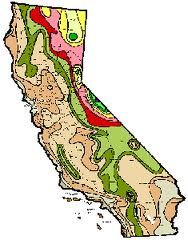Southern California Planting Zones
 Question from Kim:
Question from Kim:
What is the zone for planting/growing vegetables, flowers, trees in the high desert of so. Calif. I live in the Antelope Valley, north of Los Angeles. My zip code is 93551. Where can i look this up on the web?
Answer from Pat:
You live in Sunset Zone 11. You will find Lancaster on Page 57 in “Sunset Western Garden Book” which as a gardener you probably own or certainly can access at your local library. The characteristics of Zone 11 are described on page 59.
Here is a link to Sunset Climate Zones:
http://www.sunset.com/garden/climate-zones/sunset-climate-zones-california-nevada-00400000036331/
Here is a link to a gardener’s comment that has a list of plants you can grow in zone 11.
http://forums.gardenweb.com/forums/load/swest/msg1002044228394.html
More on zones here: http://www.getnet.net/~richarde/cactusstore/Sunset%20%20Zone%20Map.htm


Where can I buy plant based compost in the antelope valley?
This is not the kind of question I am qualified to answer. Why don’t you inquire of the local garden club if they know a good source of compost?
Hello,
My niece lives in Palmdale, CA, zone 11. She wants to start a garden but she has never gardened before. Can you recommend a good book to help her get started? I live in Seattle so I’m not able to give her hands on support. I have many books on gardening but wondered if there was a book that teaches the basics of gardening and is specific to zone 11.
Thanks for your help.
Thank you for asking this question since the answer may help many people. I suggest that you give your niece the New Sunset Western Garden Book. This is the most recent edition of the classic Sunset Western Garden Book which has always been the one book a gardener living in the West should own even if they own no other. At first when this new edition was published, I preferred the older editions since this new one included fewer plants in the encyclopedia in order to make room for an expanded “how to garden” section at the end, called “Gardening Start to Finish.” Though at first I deplored the fact that the plant encyclopedia had shrunk, now I celebrate the fact that there is a book out there that can help anyone in any western climate zone who wants to garden even if they are new to gardening.
Suggest to your niece that she begins by reading all the opening pages. The descriptions of climate zones and maps showing locations are hugely informative. Then comes the indispensable “Plant Selection Guide” which provides hundreds of plants listed by their function in the landscape. Next, she can have a look at the plant encyclopedia beginning on page 121 so she understands how it works and how much she can learn from it. For example, many vegetables are now included in this encyclopedia along with instructions on care and planting. The lists of fruit trees are particularly useful since they help gardeners choose the right varieties to grow in their climate zones. Many classes of plants are explained in greater depth than once was the case, For example, the entry on dahlias informs the gardener all about growing them and the section on roses is a whole education, including the basics of pruning. But do suggest to your niece that she not to get too deeply involved in all this. She has her whole gardening life ahead of her and this book has much to teach in the years ahead. After a brief look at this encyclopedia, your niece should read the whole section called “Gardening Start to Finish”. This is exactly what you have been looking for and will help her so much.
When this latest edition of the famous Sunset Western Garden book first came out, I thought, “This book is trying to do what my books are trying to do.” Well, now I am saying, ’three cheers for that!”. It is greatly needed!
For forty years I have been trying to teach Southern California gardeners the basics of gardening. Now at age 88 I am no longer strong enough to drive all over Southern California giving talks and selling my books. A couple of years ago when my publisher suddenly dropped my organic gardening book from print (probably because they were no longer making money on it) I was very upset. But today bookstores are almost non-existent so how do publishers promote their books? Now I am rejoicing that the New Sunset Western Garden Book is still out there teaching people how to garden and doing it well, and I have a book to recommend to you to give your niece that will teach her how to garden in Zone 11 or anywhere else in the west.